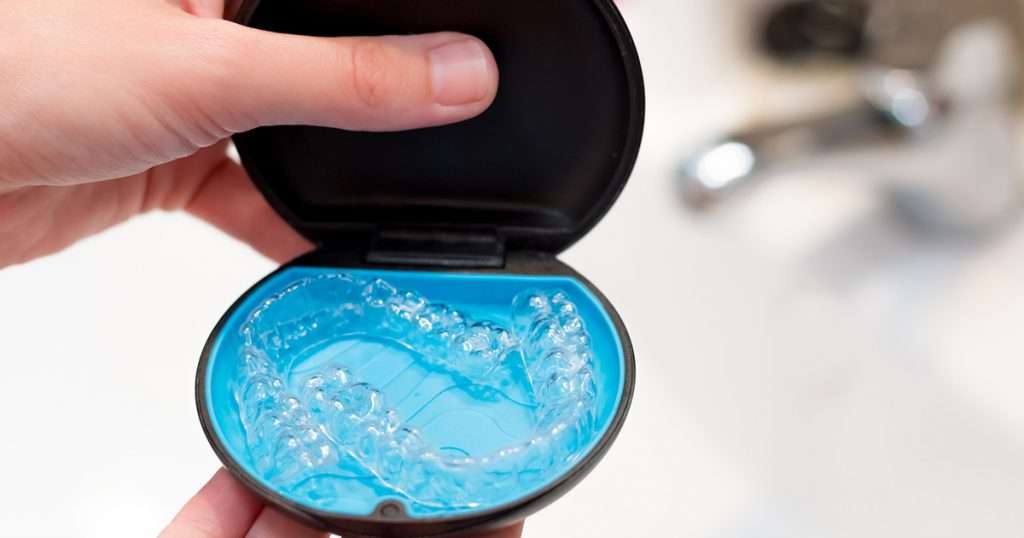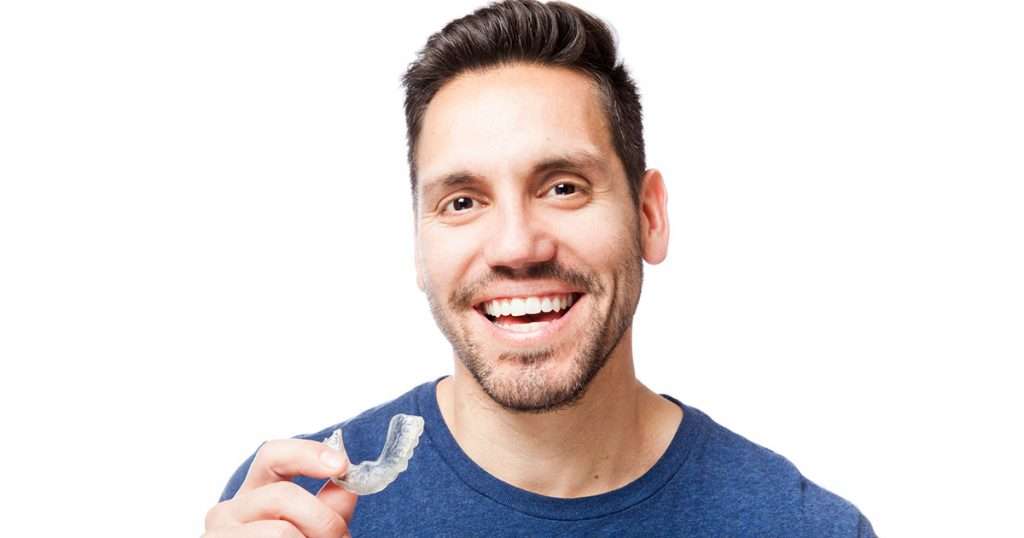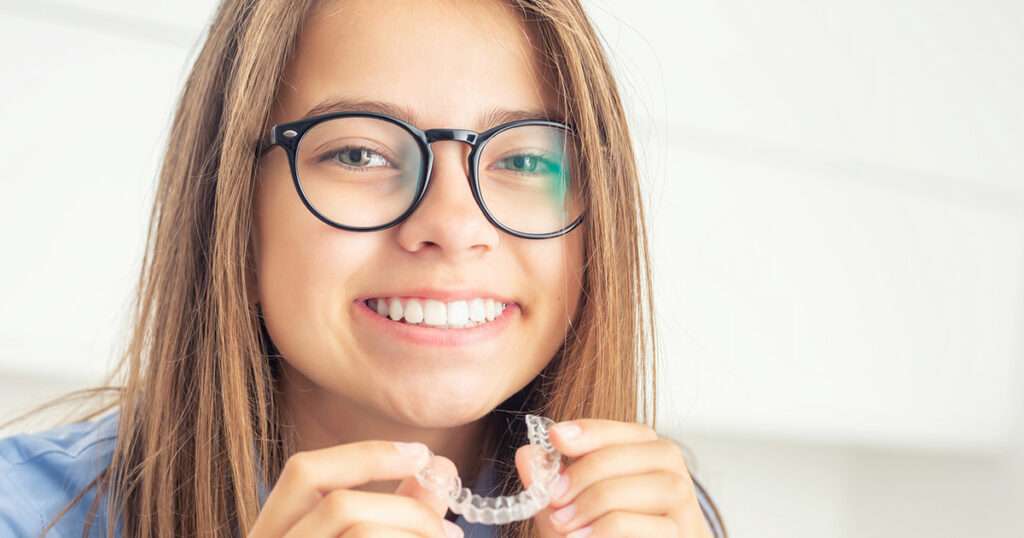Finally getting your braces taken off after years of wearing them is an exciting and nerve-wracking prospect. When you’re used to wearing braces, it can be hard to imagine not having them. On one hand, finally living your life and eating what you’d like free of braces is a thrilling idea. On the other, the process of removal and what happens after your braces are gone can be stressful for some.
The more knowledge you have about what to expect during the process and after, the less stress you’ll experience. Informing yourself about the procedure can help ease anxiety so you know what to expect after removing your braces.
The Removal Procedure
During removal, your orthodontist will use a sanitized, specialized set of orthodontic pliers to remove the brackets affixed to your teeth. The pliers are used to squeeze off the bracket and weaken the dental adhesive bond between the brackets and your teeth. While you’ll likely hear cracking or popping during this procedure, it is normal—it’s only the sound of the brackets and adhesive releasing and won’t cause you any pain.
Then, your orthodontist will begin carefully removing the excess dental adhesive and cement from your teeth. In most cases, this involves polishing the teeth so that no adhesive residue is left behind. The tool used for this procedure is designed to prevent any damage to your enamel, and may be reminiscent of your dentist scraping plaque away from your teeth during a regular dental visit. It may feel a bit strange to have your teeth scraped and polished, but it’s a necessary part of the process. Again, no part of the procedure should cause you pain, you’ll just experience a slight amount of pressure as the brackets are squeezed off, and a scraping sensation as your teeth are polished.
The amount of time the removal procedure takes will vary. Together, removing the braces and polishing your teeth should take about thirty minutes or less. After that, your orthodontist will take photographs and x-rays of your newly freed teeth. Then, the orthodontist will take impressions for your retainer.
Do You Get Your Retainer the Same Day You Get Your Braces Off?
Your retainer or retainers will be created with an impression of what your teeth look like now, after your braces are removed. Then, your custom-fit retainer will be molded and set. Sometimes, you will receive your retainer on the same day you get your braces removed, while other times, you’ll need to return at a later date.
A retainer’s purpose is to ensure the stability of your teeth in their new position, preserving the work done by your braces. In other words, a retainer is meant to retain the current position of your teeth even after your braces are removed. By preventing your teeth from shifting, the retainer can ensure the position of your teeth remains consistent, so they don’t revert to how they were before braces.
After about six months, you will be able to wear your retainer exclusively at night, but until you’re cleared by your orthodontist, it’s very important that you wear it 24/7. Otherwise, your teeth could shift in your gums and undo all the hard work done by your braces. Unfortunately, this essentially negates the time and money put into your teeth. By being conscientious about wearing your retainer, you can prevent your teeth from shifting and keep the smile you worked so hard for. In this way, wearing your retainer can ensure the long-term success of your orthodontic investment.
Caring For Your Retainers

In addition to wearing your retainer at all times, it’s important to give retainers the upkeep necessary to maintain their function. Whether your retainer is a clear, plastic outline of your teeth or a wire and acrylic model, you should remove your retainer when you’re eating, drinking, participating in physical activity, or brushing your teeth. Leaving your retainer in while eating or drinking can leave permanent stains. After meals, rinse or brush your retainer to keep it stain-free. Never put a retainer through the dishwasher, and don’t clean it with extremely hot water that may soften your retainer and change the shape.
Keep a close eye on your retainer. When it’s not in your mouth, keep it in its container. We’ve had far too many patients place their retainer on a napkin while eating, only to lose it or throw it away. Be sure that your retainer is in a secure location and can’t be found and chewed on by a pet.
What Should Your Retainer Feel Like?
If you wear your retainer 24/7, you shouldn’t feel any tightness or pressure when putting it into place. If, once you’re cleared to wear your retainer at night only, the retainer suddenly puts more pressure on your teeth when you put it into place, you may need to return to regular wear to ensure your teeth move back into place. Some teeth want to revert back to their old placement more quickly than others. For that reason, if you lose or break a retainer, be sure to get a replacement quickly.
When you attend your regular orthodontist check-in appointments, be sure to bring your retainers with you. It’s important for your orthodontist to check for damage and to see whether they fit your teeth easily. This is also a simple way to determine if any teeth have moved drastically since the removal of your braces.
How Long Do Your Teeth Hurt After Getting Braces Off?
Throughout the time you’ve been wearing your braces, you’ve likely had to deal with at least a small bit of pain and discomfort. After removal of your braces, you can still expect some tenderness in your teeth and gums, though this should ease within a week.
There are other changes you’ll have to get used to after braces, especially since you’ve likely had them long enough to get used to them. You were required to adjust your eating, talking, brushing, and flossing routines to accommodate your braces, and you’ll notice how different it is without them.
Some changes you’ll notice soon after braces removal include the following:
- Your teeth will be straighter
- There may be soreness in your teeth and gums
- You’ll find brushing and flossing easier
- The lack of brackets may make your teeth feel slimy
- You won’t have to avoid hard, chewy, or crunchy foods
- Extreme temperatures may make your teeth a bit sensitive
- There could be small changes in your bite as your teeth settle
- You’ll need to pay attention to where your retainer is
Can You Eat Normally After Removing Braces?

Yes! Patients say that of all the changes they experienced with the removal of their braces, this was the best. After all your hard work avoiding your favorite foods for the health of your teeth and the safety of your braces, you can finally go all out.
Still, be sure to be careful, as the discomfort in your teeth and gums could make some difficult-to-chew foods painful. You should also generally avoid very sticky, sugary foods to preserve your dental health. Other than that, you can eat normally.
Care and Upkeep After Braces
After the removal of your braces, you may notice some discoloration on your teeth. Even if you’ve been diligent in cleaning your teeth while you had braces, discoloration is still possible. It’s difficult to clean your entire tooth when it’s partially covered by the bracket.
The best way to address discoloration is to maintain a regular schedule for good dental hygiene. After your braces are removed, you’ll need significantly fewer tools to aid in the upkeep of your teeth and gums, but this doesn’t mean you should neglect the care and cleaning routine. Ensuring you brush and floss multiple times a day is still very important, and it can limit the staining on your teeth and keep your smile bright and healthy.
There are additional options to improve discoloration from braces. However, it’s worth noting that tooth whiteners and whitening toothpaste are far less effective than in-office procedures we can provide. By talking to your orthodontist or dentist about your options, you can learn about teeth whitening methods that are significantly more effective than drugstore solutions. Your orthodontist should inform you of all the best ways to ensure your teeth stay healthy and clean.
Maintaining the Health of Your Beautiful Smile
To ensure the time, effort, and care of your time with braces isn’t wasted, you’ll need to wear your retainer as instructed and ensure the care and maintenance of your teeth. As mentioned, if you go without your retainer for a long period, or stop wearing it before you’re ready, your teeth will begin to shift. While it’s not the end of the world when you lose or break a retainer, you do need to make an appointment to have it replaced as soon as possible.
Part of maintaining your smile is also scheduling an evaluation with your orthodontist after six to eight months to ensure that you’re on track to keeping your beautiful smile. This appointment will help your orthodontist monitor the progress of your teeth and gums, as well as inform you if there should be any changes to your retainer routine. You’ll also want to schedule an appointment with your dentist every six months so that you receive a professional cleaning of your teeth and continue to monitor your dental health.
Finally, be sure to keep an eye on your wisdom teeth during this time. Your orthodontist will take an x-ray of your teeth a few months after your braces are removed to determine if your wisdom teeth are erupting or impacted. Wisdom tooth issues could severely damage the progress made by braces, and it’s important for your orthodontist and dentist to monitor their status.
Keep the Smile You Deserve

Overall, braces are a worthwhile investment if they help you achieve the smile you’ve always wanted. If you take care of your teeth, retainers will ensure that the problem of crooked teeth doesn’t come back once your braces come off. Take care of your teeth and invest in quality retainers, and you can maintain your beautiful new smile for years to come.
Editor’s Note: This article was originally published November 12, 2020 and has been updated October 4, 2022.

Dr. Tyler Robison is an alum of Mesa’s Mountain View High School. He graduated from Brigham Young University before being accepted to the “Top Ten-nationally ranked” University of Louisville in Kentucky, where he earned his Doctorate in Dental Medicine and a Master’s Degree in Oral Biology. He graduated with honors in the top ten percent of his class. Dr. Robison continued at the University of the Pacific in San Francisco, where he received a second master’s degree in dental science and his orthodontic certification.


